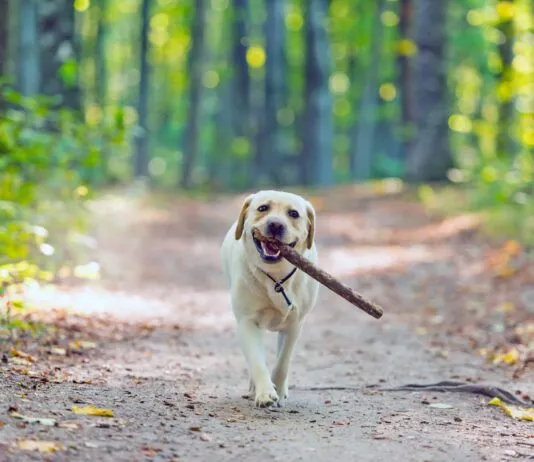(Raw Dog Food Tip #3) Relax About Supplements
One of the things that intimidated me about this diet initially was reading long, detailed lists of what some people supplemented wth on a daily basis. Discussions about whether powdered Icelandic kelp was better that Pacific kelp, or the proper temperature to store flax seed oil, or what vital nutrient would be missing if one fed Brand A fish oil versus Brand B didnt help one bit! Once I realized the huge array of bio-available nutrients supplied by the raw foods alone, I relaxed and started to apply some common sense to supplementation.I use supplements in moderation to be sure I am covering all the nutritional bases. Most of my dogs take whole fish oil and E gel caps readily like treats. I use ground meat for phoebes supplements, making up a couple of days worth of little supplement-filled meatballs at a time. I feed all supplements with their meals.
(Canine Allergies tip #2) Will a Home-Prepared Diet Help Allergies?
Most holistic veterinary practitioners recommend switching any itchy dog to a complete and balanced home-prepared diet containing real foods. This will decrease the dogs exposure to unnecessary or complex chemicals and give his body the opportunity to utilize the higher-quality nutrients present in fresh foods. Whether the diet is cooked or raw, the increased nutrient quality and availability of fresh whole foods will improve the health of any dog who currently receives even the best dry or canned foods.
(Raw Dog Food Tip #1) Grains… Good or Evil?
Dogs are not engineered to gain a significant portion of their nutrition from grains. This explains the large, soft stools excreted by most kibble-fed dogs. It is clearly processed poorly by the dog. Many vets agree that corn, wheat and soy may cause allergies, skin and coat problems. Overfeeding grains may be a big factor in the frequency of canine obesity today. This in turn may cause or aggravate many other health problems.
(Dog Food Logic #2) Who Makes Your Dog Food?
While today many pet professionals are aware that the company that owns and sells the brand they feed may not actually be manufacturing the food, many dog owners do not. A substantial number of companies co-pack their foods, which means that the pet food company gives their formulation (recipe) to a manufacturing company that produces, bags, labels and ships their food. The manufacturer mixes ingredients according to the specified formulations and produces a wide variety of pet foods that are sold under different brand names. So while you may think that P&G or Nestle Purina make the food you feed your dog, in some cases the company that actually puts together the final product is a business you have never heard of such as Ohio Pet Food, CJ Foods and Simmons none of which would qualify as household names.
(Canine Hearling Loss #1) Things to Do When Your Dog Starts Losing His Hearing
If were fortunate enough to have them live to old age, at some point, most of our canine companions begin to lose their hearing and may eventually be, for all intents and purposes, deaf. Its painful to watch a beloved dog become less and less responsive to his environment because hes unaware of whats going on around him, and even more so when it limits your ability to communicate with him. The thought of a hearing-impaired dog wandering off and not being able to hear your calls is frightening. Here are some things you can do if your dogs hearing isnt what it used to be:
(Canine Hearing Loss #2) Things to Do When Your Dog Starts Losing His Hearing
Owners of deaf dogs frequently relate that their biggest challenge is getting their dogs attention, whether at home or out in the world. Here are some tips for getting a deaf dogs attention (these tips work well with dogs who hear, too.) Hand signal for his name Just as you teach a dog to respond to Max or Spot, you can teach a deaf dog to respond to a signal that means, Im talking to you now. A simple finger point or a wave will each work and are easy to teach, but any signal will do.
(Canine Hearling Loss #3) Teaching Your Dog Hand Signals
Here is how I initially teach hand signals for Down, Sit, and Come. I encourage my students to start with big hand signals, like the ones most people use in obedience competition. No one wants to risk having their dog miss the signal from across the ring!
(On Talking Terms with Dogs: Calming Signals #1) How to Identify and Use Calming...
A signal can be a swift movement, with the dog either turning his head to the side and back, or holding his head to one side for some time. It can be just a tiny movement, or the whole head can be clearly and deliberately turned to the side for several seconds. Your dog may use head turning to tell an approaching dog to calm down. Perhaps the other dog approached yours too quickly, or approached him directly head on instead of in a curve.
(On Talking Terms with Dogs: Calming Signals #2) How to Identify and Use Calming...
Turning the side or back to someone is very calming. When dogs play together rather wildly, some of them will start turning their side or back to the others in between playing, to make things calm down a little.Your dog may use this signal when another dog growls or behaves threateningly towards him in some way, such as running up to him too quickly. He may also use it if you speak in a very cross voice or go up to him when he feels that you are angry. When young dogs pester older ones, the older often turns back to make them calm down. When you jerk at the leash your dog may turn away from you, maybe pulling even more.
(Kennel Cough #1) Kennel Cough and Colds
The two most common afflictions of the respiratory system are the common cold and kennel cough. Both of these ailments are usually instigated by any of a number of viruses, often followed by secondary bacterial invasion. The severity of the symptoms varies widely, but in most colds they are mild and include wheezing, coughing, reluctance to move, and perhaps a mild fever.
(Kennel Cough #2) Bordetella Vaccination
Most boarding facilities require proof of Bordetella vaccination for dogs who will be visiting. However, because there are many strains of Bordetella, and because no vaccine protects every patient, some immunized dogs contract tracheobronchitis despite being vaccinated. Veterinary recommendations range from vaccinating every four months to not at all.
(Kennel Cough #3) Clearing the Air
When Faith Thanas, an aromatherapist who lives in Leicester, Massachusetts, adopted a Doberman Pinscher from Louisiana one year after Hurricane Katrina, Sasha arrived in a van carrying 20 rescued dogs. A few days later, she started coughing.To help soothe Sashas throat, Thanas mixed a blend of essential oils to spray in the air around the dog. She started with Ravensare (Cinnamonum camphora), one of the must have essential oils listed by Kristen Leigh Bell in her book Holistic Aromatherapy for Animals. As Bell explains, this gentle and tolerable antiviral, antibacterial essential oil supports the immune system and has tonifying effects.







